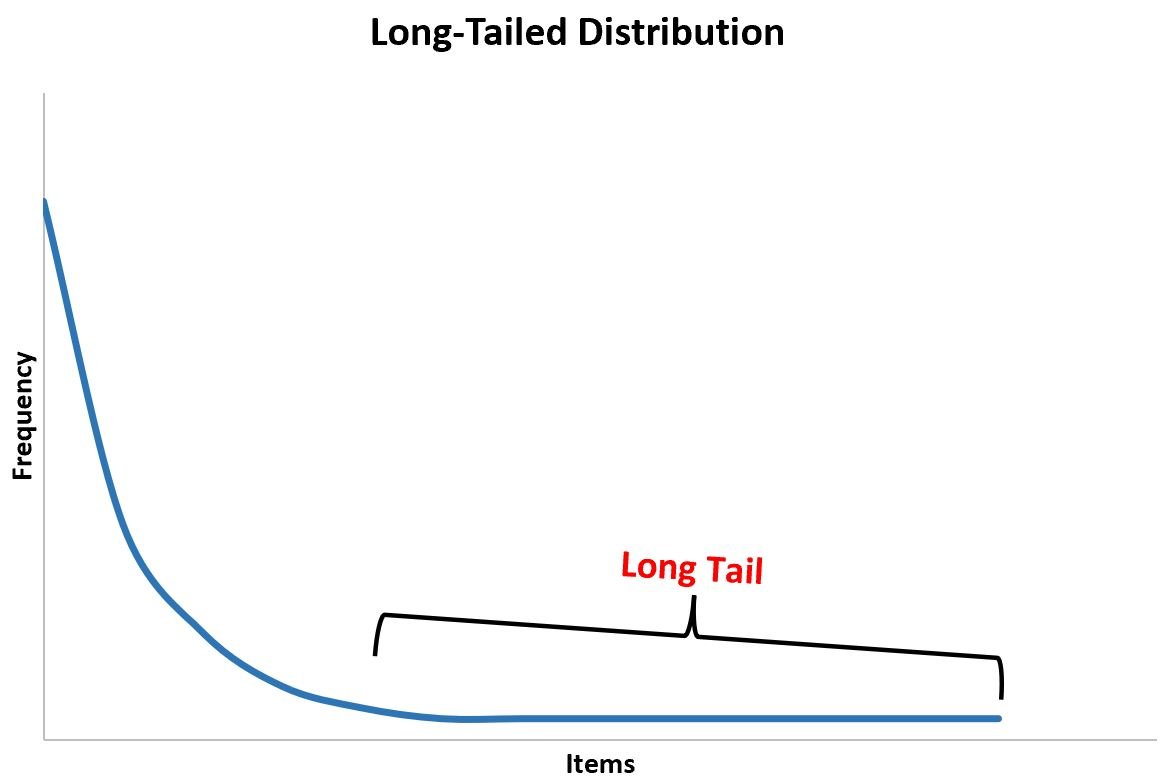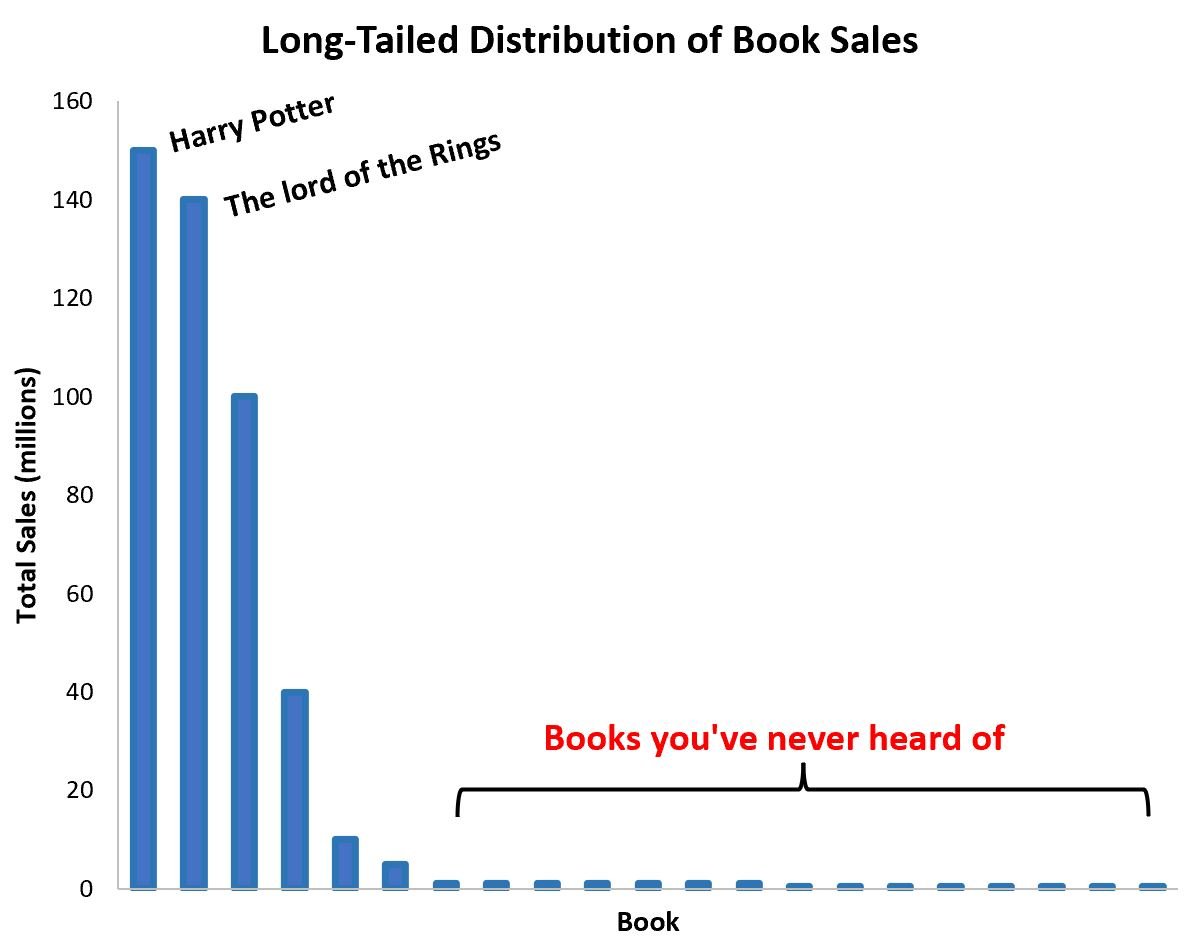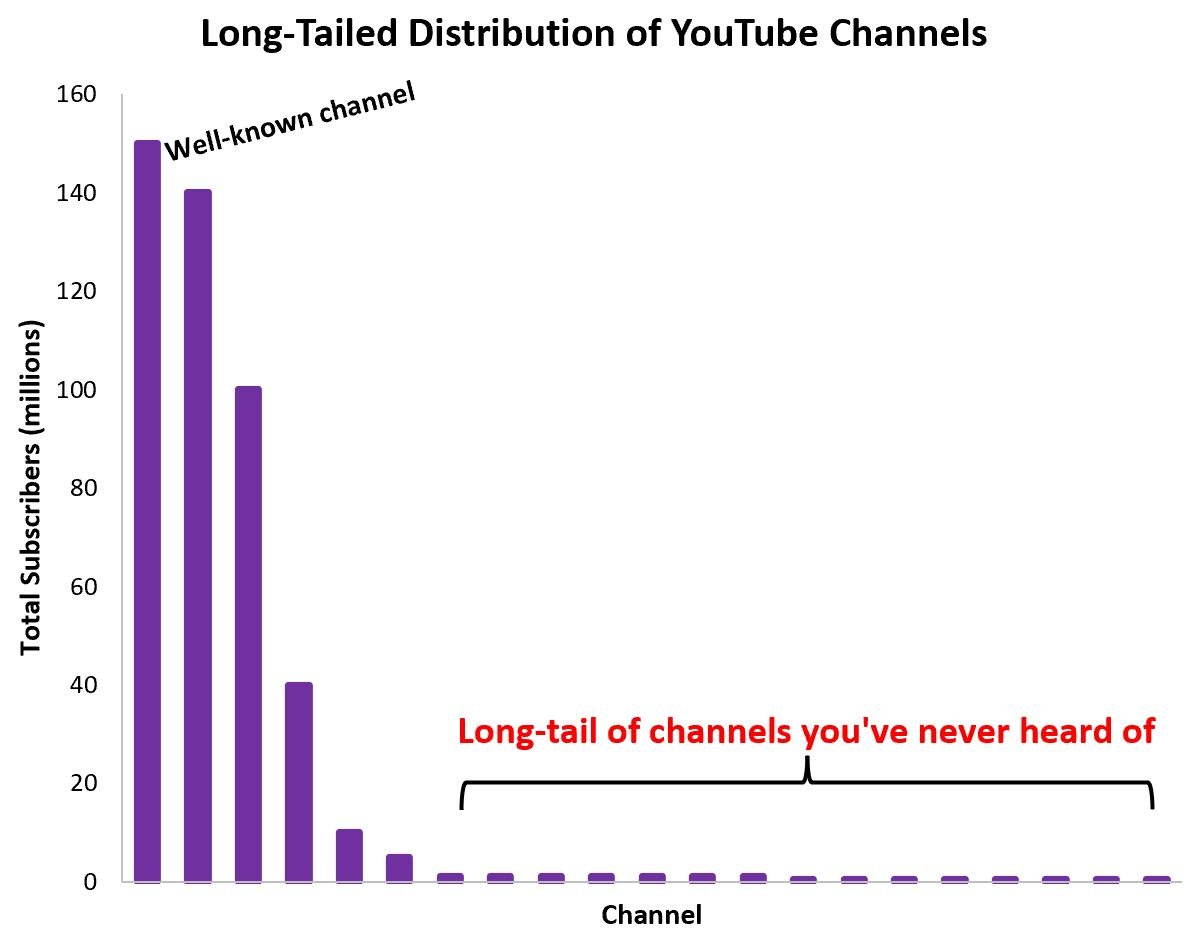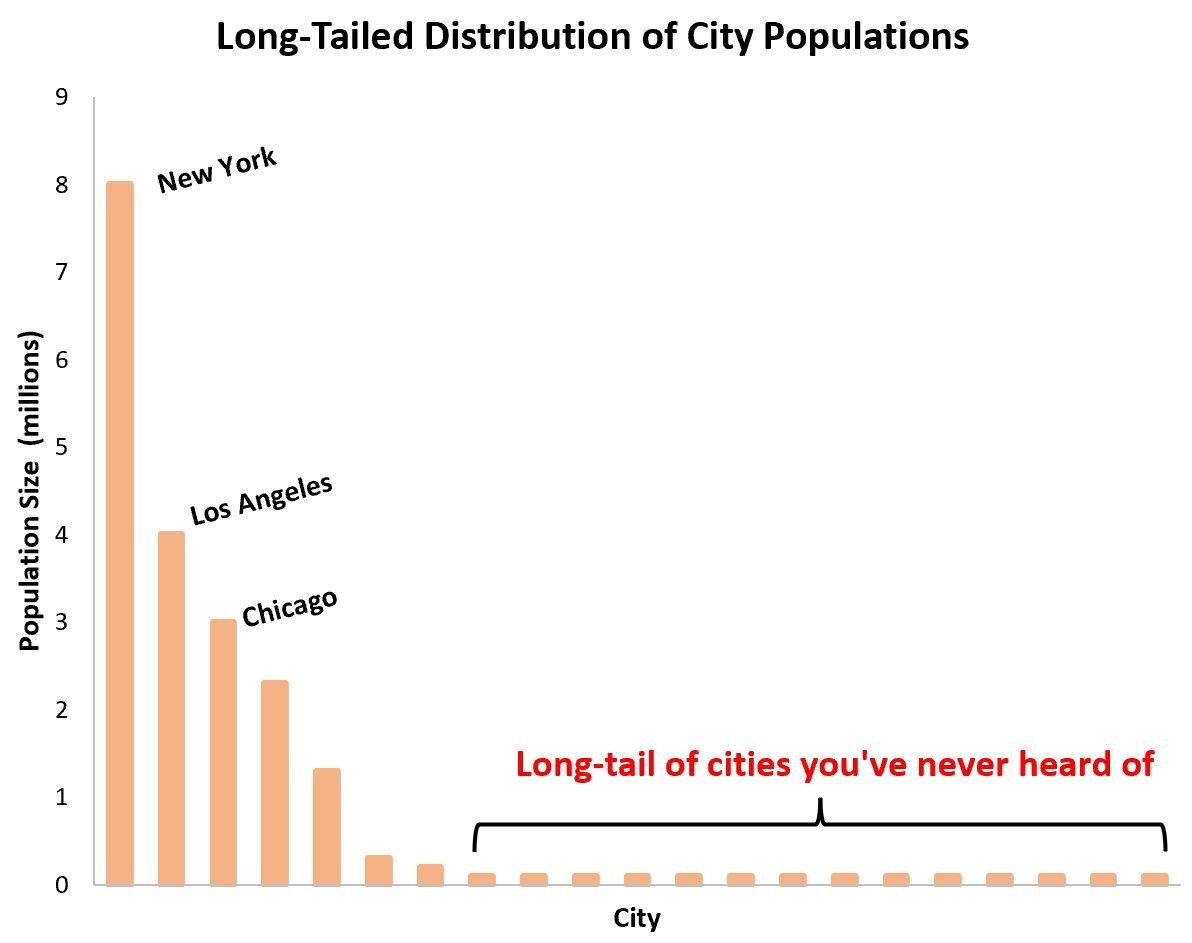In statistics, a long tail distribution is a distribution that has a long “tail” that slowly tapers off toward the end of the distribution:

It turns out that this type of distribution appears all the time in different real-world domains and it has interesting implications.
This article provides several examples of long-tail distributions in the real world and shares why long-tail distributions are important.
Example 1: Long-Tail Distributions in Book Sales
One of the most well-known examples of a long-tail distribution is book sales.
There are a few books that have sold hundreds of millions of copies (Harry Potter, The Lord of the Rings, The Da Vinci Code, etc.) but most books sell less than one hundred copies total.
If we created a bar chart to visualize the total sales of every book ever published, we would find that the chart exhibits a long-tailed distribution:

A few well-known books have sold hundreds of millions of copies and then there’s a long tail of thousands upon thousands of books that have sold very few copies.
Example 2: Long-Tail Distributions in YouTube Channels
Another well-known example of a long-tail distribution is the number of subscribers for YouTube channels.
There are a handful of channels that have tens of millions of subscribers, but then there is a long tail of thousands upon thousands of channels that have less than 1,000 followers.
If we created a bar chart to visualize the total subscribers for each YouTube channel in existence, we would find that the chart exhibits a long-tailed distribution:

Example 3: Long-Tail Distributions in City Populations
Another example of a long-tail distribution is the population size of cities in the United States.
There are a handful of cities that have millions of residents, but then there is a long tail of thousands upon thousands of cities that have fewer than 10,000 total residents.
If we created a bar chart to visualize the population size for all cities in the United States, we would find that the chart exhibits a long-tailed distribution:

Why Long-Tail Distributions Matter
Long-tail distributions are particularly important to understand in business because they present an opportunity for a business model that revolves around making a few sales for a lot of products.
For example, consider our example from earlier about book sales:

All of those “books you’ve never heard of” actually had customers interested in reading them, but most big retailers didn’t carry them in store because they didn’t sell many copies.
However, when Amazon suddenly made it possible to buy these niches books online they were able to sell a few copies of tens of thousands of different books from the long tail of the distribution.
The combined sales of all of these books in the long tail actually amounted to significant profits.
Other businesses have also capitalized on this model. For example, eBay has made it possible for hundreds of thousands of people to make a few sales of niche items.
Since eBay takes a small cut of each sale, all of these sales from long-tail sellers who only sell a couple items per year actually adds up to significant profits for eBay.
Yet another example of a business who has capitalized on the long-tail model is Netflix.
Most TV shows and movies that are released only have small audiences, but by creating a platform where all of these niche long-tail shows could be viewed a few times each, Netflix was able to build a massive base of subscribers who each subscribed to watch particular shows.
In fact, there is an entire book written about this business model called The Long Tail by Chris Anderson.
The whole book is about how making a few sales on lots of products can actually be a great business model.
Additional Resources
The following articles provide information about other types of distributions in statistics:
Left Skewed vs. Right Skewed Distributions
An Introduction to the Normal Distribution